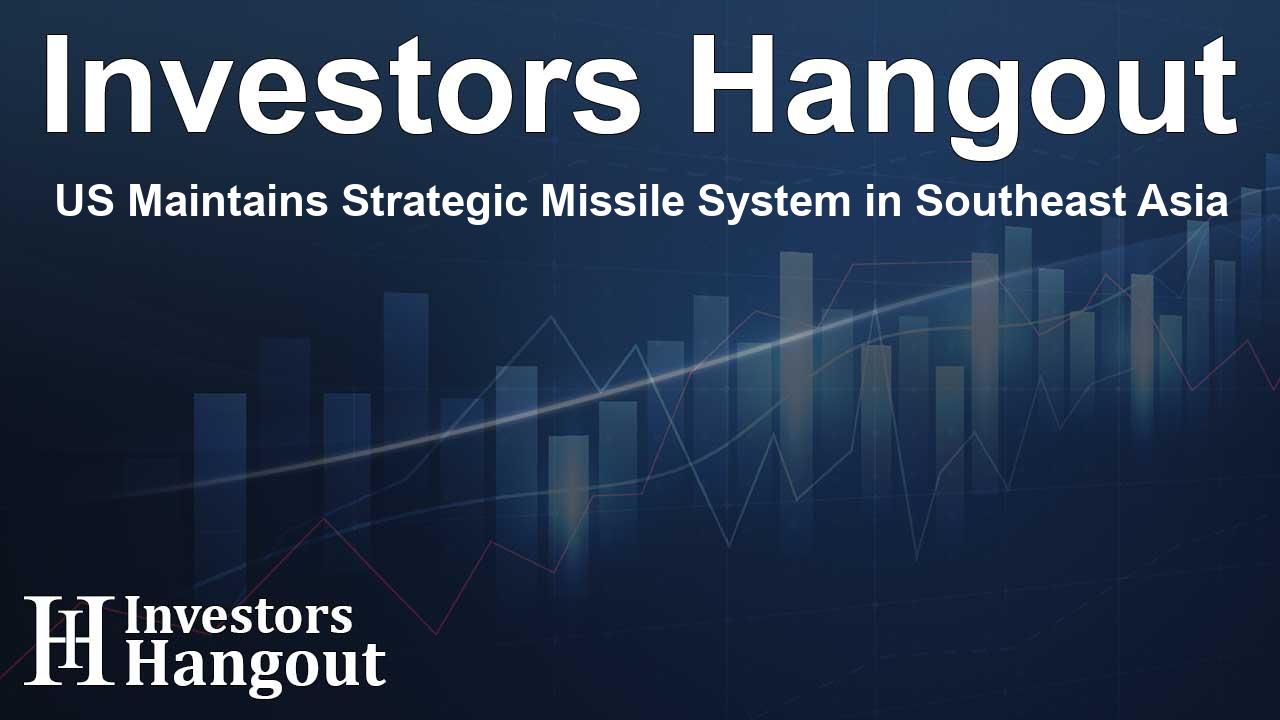US Maintains Strategic Missile System in Southeast Asia

US Keeps Strategic Missile System in Key Location
The United States has chosen to keep its advanced mid-range missile system in the Philippines, despite China's ongoing calls for it to be removed. This move highlights the U.S. commitment to its allies in the region and acts as a deterrent against potential aggression.
Understanding the Typhon Missile System
One of the notable systems deployed is the Typhon missile system, capable of reaching targets deep within Chinese territory. Originally introduced for joint military exercises, its continued presence showcases its vital role in U.S. defense strategy.
The Strategic Importance of the Philippines
The Philippines holds a critical position near Taiwan, which amplifies its significance in U.S. military operations throughout Asia. The missile system's presence is considered essential for supporting Taiwan, especially given the rising tensions and potential threats from China.
Reactions to the Missile Deployment
China and Russia have voiced strong opposition to the ongoing presence of the U.S. missile system, arguing that it fuels an escalating arms race. The Chinese foreign ministry has raised serious concerns, claiming that this development threatens regional stability.
Philippine Military Training Exercises
Philippine officials have confirmed that training operations involving the U.S. missile system are continuing, particularly on the northern island of Luzon, which is adjacent to important maritime areas like the South China Sea and the Taiwan Strait. There are no plans to withdraw the missile system, even after upcoming joint exercises.
Evaluating Conflict Scenarios
A senior official from the Philippine military noted that U.S. and Philippine forces are currently evaluating the missile system's capabilities across various conflict scenarios. The ultimate decision regarding the missile system's future is in the hands of U.S. Army Pacific (USARPAC), indicating a strong collaborative effort in defense planning.
Growing Tensions with China
This strategic decision reflects the increasing tensions between the United States and China. The U.S. government is exploring a significant rise in enriched uranium imports from China, raising concerns about the potential circumvention of existing sanctions against Russia.
Congressional Concerns about Military Readiness
Key congressional committees have sounded the alarm that the U.S. is lagging behind China when it comes to military readiness. Lawmakers have pointed out outdated processes within the Pentagon and stressed the urgent need for faster technology transfers to ensure military effectiveness alongside allies.
Maritime Security Issues in the South China Sea
Rising incidents in the South China Sea have further strained relations, exemplified by a recent collision between Chinese and Philippine vessels, which led to accusations against Beijing for spreading false information. The Philippine military has previously condemned China's actions as violations of its exclusive economic zone.
Public Perception of the United States
A recent survey indicates that the U.S. retains a more favorable image worldwide compared to China, especially in high-income countries. This perception significantly influences the geopolitical landscape, affecting international relationships and tensions.
Frequently Asked Questions
What missile system is being maintained in the Philippines?
The Typhon missile system is being kept in the Philippines, capable of targeting regions in China.
Why is the Philippines significant for the U.S. military?
The Philippines provides strategic proximity to Taiwan and key maritime routes, making it vital for American military operations.
How have China and Russia responded to the missile deployment?
Both nations have criticized the deployment, citing concerns over an escalating arms race and regional security threats.
Are there plans to withdraw the missile system soon?
Currently, there are no immediate plans for withdrawal, with ongoing training and assessments in place.
What broader tensions exist between the U.S. and China?
Current tensions include military preparedness, trade disputes, and the situation in the South China Sea, further complicating diplomatic relations.
About The Author
Contact Caleb Price privately here. Or send an email with ATTN: Caleb Price as the subject to contact@investorshangout.com.
About Investors Hangout
Investors Hangout is a leading online stock forum for financial discussion and learning, offering a wide range of free tools and resources. It draws in traders of all levels, who exchange market knowledge, investigate trading tactics, and keep an eye on industry developments in real time. Featuring financial articles, stock message boards, quotes, charts, company profiles, and live news updates. Through cooperative learning and a wealth of informational resources, it helps users from novices creating their first portfolios to experts honing their techniques. Join Investors Hangout today: https://investorshangout.com/
The content of this article is based on factual, publicly available information and does not represent legal, financial, or investment advice. Investors Hangout does not offer financial advice, and the author is not a licensed financial advisor. Consult a qualified advisor before making any financial or investment decisions based on this article. This article should not be considered advice to purchase, sell, or hold any securities or other investments. If any of the material provided here is inaccurate, please contact us for corrections.
